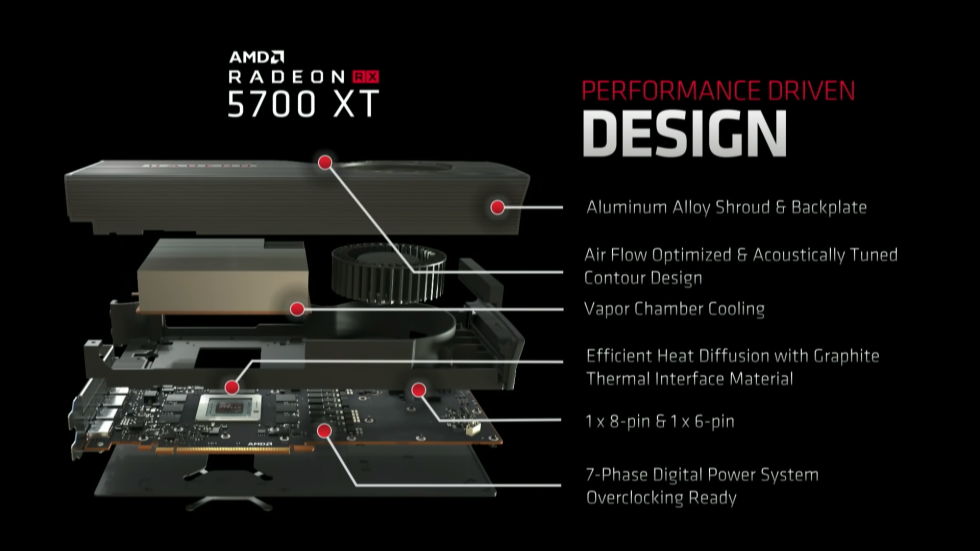AMD
took the stage at E3 to announce its "Navi" family of GPUs. The company's new graphics cards are officially the AMD Radeon RX 5700 XT and Radeon RX 5700. The 5700 series is launching July 7, making the GPUs a one-two punch alongside AMD's Ryzen 3000 series CPUs.
AMD isn't tackling the flagship GPU market with the 5700 series. Instead, the company is aiming for more mainstream pricing with mainstream performance: the 5700XT is $449, while the 5700 is $379. AMD is positioning the cards against Nvidia's GeForce RTX 2070 ($499) and 2060 ($349), respectively, and claims performance wins in each comparison. The cards introduce AMD's new "RDNA" architecture, which AMD says has 1.25x performance-per-clock and 1.5x performance-per-watt over the previous generation. The chips are built on TSMC's 7nm manufacturing process, a significant shrink from the 12nm process used on the Radeon RX 590, and on Nvidia's GeForce RTX 2080. The Navi die is significantly smaller than the previous-generation Vega design, with a die area of only 251mm2 compared to the 495 mm2 die area for Vega. The smaller die should make the Navi significantly cheaper to produce than Vega.
For specs, the top-end Radeon RX 5700 XT has 40 compute units with 2560 stream processors total. AMD gives three numbers for the clock rate on the XT: a 1605MHz "Base" clock, a 1755MHz "Game" clock, and a 1905MHz "Boost" clock. As usual, the cheaper 5700 disables compute units and lowers the clock rate, so you have 36 compute units for 2304 stream processor total, a base clock of 1465MHz, game clock of 1625MHz, and a boost clock of 1725MHz. If any of these clock rates are too conservative for you, AMD is promising the 5700 XT is "overclocking ready" thanks to a power solution with room to grown. Both of AMD's reference designs come with 8GB of GDDR6 memory.


